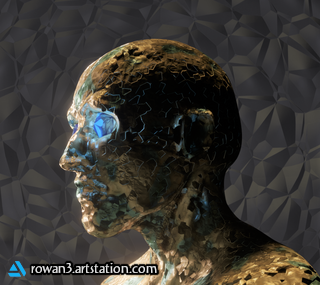Psychoanalysis
Interpreting the Symptoms of Schizophrenia
Incorporating psychodynamic and biological perspectives.
Posted September 21, 2021 Reviewed by Ekua Hagan
Key points
- Some modern approaches to schizophrenia view psychotic symptoms as meaningless and without psychological explanation.
- For many years, psychodynamic theorists have offered psychological understandings of schizophrenia symptoms.
- Psychological approaches to schizophrenia comprise an important part of biopsychosocial formulation.
In the second edition of their now-classic textbook Perspectives of Psychiatry, Paul R. McHugh, M.D., and Phillip R. Slavney, M.D., write, "Schizophrenic symptoms are psychological events without explanation, and without is the operant word" [emphasis in original] (p. 89). They add that these symptoms are "mental phenomena in which no glimmer of psychological cause and effect can be perceived" (McHugh & Slavney, 1998, p. 88).

This view—that psychotic symptoms are unexplainable and senseless phenomena—has become common in modern discussions on schizophrenia. From this perspective, it makes little sense to ask why a particular symptom is occurring at a given point in time—the symptoms are meaningless phenomena resulting from brain pathology. Thus, the content of hallucinations or delusions—for instance, what an auditory hallucination is saying to the patient—is seen as psychologically insignificant; what matters is the presence of symptoms.
Yet, a number of psychodynamic theorists, including some very well-known psychiatrists, have demonstrated that even the most bizarre and seemingly nonsensical psychotic symptoms can be understood via psychoanalytic investigation (see Stone, 1999, for an excellent overview). Much of this psychoanalytic work continues to this day.
A psychodynamic investigation of psychotic symptoms
Central to the psychoanalytic perspective is the belief that in the mental world, as in the physical world, events are determined by the events which precede them; nothing in the psychological realm can be said to happen by chance. This is true even for those mental experiences that seem so foreign to most of us: psychotic symptoms. Despite the often bizarre and illogical nature of these symptoms, a careful psychodynamic investigation can reveal their idiosyncratic meaning and function.
I will share a few brief examples to illustrate a psychoanalytic interpretation of schizophrenia:
In a common form of schizophrenia, historically referred to as paranoid-type schizophrenia, the patient is engrossed in a delusional theme which places them at the center of some dreaded situation or plot. Frequently, the patient experiences auditory hallucinations which align with the delusional ideas; they hear others speaking negatively or critically about them. In these cases, the patient projects to the external world his hostile feelings toward himself; no longer does the patient accuse himself, now the accusations come from others.
The patient who experiences olfactory hallucinations of a foul odor emanating from his body has concretized his unconscious belief that he is a bad or rotten person; as unpleasant as it is to smell awful, it is much more tolerable than to believe that one is awful.
A man who believes that others are controlling his thoughts experiences a reactivation and concretization of the way he once felt that his parents were controlling or trying to direct his life and way of thinking.
In cases of catatonic schizophrenia, the patient may assume a statuesque position for long periods of time. Overwhelmed by the intense anxiety which accompanies responsibility, the patient becomes "frozen in time," shielded from the potential destructiveness of his own actions.
In each of the above examples, the schizophrenic symptoms are interpreted as defensive mechanisms which serve a psychological function for the individual, namely, to alleviate an unbearable anxiety rooted in intense self-criticism. Nevertheless, the symptoms eventually come at a much greater cost to the patient than whatever benefit is had, and it is for this reason that they are pathological.
The value of a complementary approach
Importantly, these psychodynamic understandings of schizophrenia do not negate biological theories of the disease. As I have written elsewhere (see Ruffalo, 2019; Furiato & Ruffalo, 2021), the psychodynamic and the biological are complementary, not antagonistic, approaches to schizophrenic illness.
The psychodynamic interpretation of schizophrenia has a long and complex history (see Stone, 1999). By the 1990s, most psychiatrists were eager to apply rapidly advancing knowledge in the field of neuroscience to the study of schizophrenia. Psychoanalysis had been declared "dead." It was within this context that McHugh & Slavney (1998) published the second edition of their Perspectives of Psychiatry.
Nevertheless, psychoanalytic conceptions of psychiatric illness continue to be of value in understanding the nature of these complex human problems. When it comes to schizophrenia, psychodynamic theories offer a meaningful account of what appear to be meaningless symptoms. These understandings comprise an important part of an integrated biopsychosocial framework for psychiatry.
References
Furiato, A. & Ruffalo, M. L. (2021). Psychologically-informed management of schizophrenia in the emergency department. Psychiatric Times.
McHugh, P.R., & Slavney, P. H. (1998). Perspectives of psychiatry (2nd ed.). Johns Hopkins University Press.
Ruffalo, M. L. (2019). Understanding schizophrenia: Toward a unified biological and psychodynamic approach. Psychoanalytic Social Work, 26(2), 185-200.
Stone, M. H. (1999). The history of the psychoanalytic treatment of schizophrenia. Journal of the American Academy of Psychoanalysis, 27(4), 583-601.




